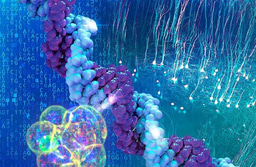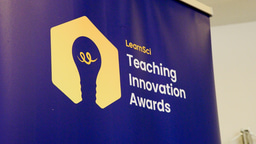Integration between university teaching and academic research: Why are we “experimental scientists” in our labs but not so much in our classrooms?

Some background
Since the seminal paper from Feldman in 1987, and the meta analysis performed by Hattie and March in 1996, a vast number of studies have investigated the relationship between research productivity and quality teaching in higher education. As it stands, this correlation is not always as straightforward as it may seem. In fact, Hattie and March concluded that “the common belief that research and teaching are inextricably entwined is an enduring myth. At best, research and teaching are very loosely coupled.” Since then, the teaching-research correlation has been described to be either negative, zero or positive depending on the study.
This heterogeneity in results can be explained by several factors. First, different indicators are employed by each author to measure research output/quality (impact factor, publications, …) and teaching/learning outcomes (student surveys, grades, …). Second, the final results are, by definition, highly dependent on the teacher, the discipline, the education system or the student group. Finally, the relative weigh of factors that convey a negative or a positive impact to this relationship can lie at the basis for this apparent discrepancy. For instance, Hattie and March found clear evidence that time on teaching and time on research correlate negatively. Also, biased incentives from institutions that promote research at the expense of teaching poorly serve instruction quality. Other reports have described how maintaining scientific professional status and participating in pedagogical change are too often at odds.
On the other hand, it is also well established that research and quality teaching clearly involve common values (e.g., organization, rationality, …) that should reciprocally reinforce. For instance, literature describes that an active research makes a professor a more effective teacher. Conversely, the opposite (being a good teacher) does not seem to have a clear impact on the quality of research. In any case, it is hard to envisage how the similar traits a good researcher and a good teacher must share would not sustain a mutually enriching relationship.
The "other" research
If research in our own experimental disciplines (the one we perform in our labs or computers) influences our teaching, research performed in the areas of cognitive sciences should also impact our abilities as instructors. From this “other” research, that is nowadays abundant and extremely sound, we know how learning is constructed and how proficiency is actually an expandable feature. We have also become aware that teaching does not always lead to learning. And that the expertness that should be achieved by a university student requires not only increased knowledge but also the development of competences in problem solving, data analysis or critical thinking. This realization is promoting a transformation in higher education that, in my opinion is, simply, unstoppable. In the Nobel prize winner Carl Wieman's words “Research has established that people do not develop true understanding of a complex subject by listening passively to explanations”.

Two key concepts have emerged from cognitive research and have settled for good: deliberate practice and active learning. As obvious as it may seem “Learning results from what the student does and thinks and only from what the student does and thinks” (quoting Herbert A. Simon). And this can only be achieved through hundreds or thousands of hours of “deliberate practice”. This concept, coined by psychologist K. Anders Ericsson, has changed our perception of the brain from an organ with its own inherent and unchangeable features towards a structure with internal plasticity that can be shaped to perform at its peak. It is a real “game changer because learning now becomes a way of creating abilities rather than taking advantage of innate ones” (see PEAK: The secrets from the new Science of Expertise). Surprisingly, as teachers, we often look at our students as if we did not truly believe what huge amount of research is telling us: that expertise is expandable with effort.
The other ancillary concept to this change, “active learning”, represents a strategy that simply works better than lectures according to numerous studies. It consists of having students work by themselves or in small teams with the aid of instructors who help them apply basic scientific concepts to solve problems or questions. In his influential 2011 paper in Science, Wieman and colleagues proved that the combination of active learning and deliberate practice can per se multiply student learning and results. Another report published in PNAS by Scott Freeman in 2014 analysed 225 cases of active learning practices in STEM disciplines and found that active learning drastically reduces failure rates. A sentence that, in my view, is extremely clarifying in the face of these cumulative results is: “At this point, it is unethical to teach any other way” (from Why Are We Teaching Science Wrong).
A teacher/researcher's perspective
The “dark side” to these strategies may be that badly implementing active learning can be worse than classical lecturing. Here is where teachers that are active in research in any field could make a real difference. As researchers, we construct and redefine hypothesis on a daily basis, we repeatedly sharpen our enquiry abilities, we practice questioning, communicating, analysis,... So, applying these fundamental and common concepts to an active learning class should not be so difficult. Many times, it simply comes down to ... numbers! It is as “simple” as designing an activity that can be applied to a 40- or 80-student class that is similar (not identical) to everyday work as a supervisor of PhD students. To me, this has four clues: 1) design is the key to success: align activities to your aims and look for good materials; 2) have students work in class and let them try and fail; 3) form small groups and make them discuss; and 4) if you are reluctant to believe this is possible, ask a colleague to let you join one of his/her active learning lessons. It will take fifty minutes of your time. But it may change your efficiency as a teacher for good. I think it is a good deal and an inviting experiment to perform.

These types of changes have an extra advantage: even when they are incorporated in small doses or at a slow pace, results are many times evident. This is a clear advantage of having teachers act as “catalysts” and not as reactants in the “student learning reaction”: they, or their practices, do not need to be in high amounts. Instead, catalytic concentrations should be enough to ignite instruction since “Learning is not something done to students but rather something that students themselves do” (see How Learning Works). Therefore, the lion's share of the overall effort and the real deliberate practice that inevitably leads to deep learning must come from students. Our main role as teachers is, quoting John Cowan, to “design activities that the students cannot go through without having learnt something”. In that scenario, even catalytic amounts of good and prepared teachers or activities should promote a real increase in learning outcomes.
As teachers and researchers we all know that the scientific method is based on trial and error, learning from mistakes, and changing our protocols. Without sensitivity to our own mistakes and an open mind to implement changes, scientific progress is not possible. So, why are we so reluctant to test ourselves when it comes down to assessing how well (or bad) we are promoting learning in our students? And why are we so hesitant to change something (attitude, methodologies,...) when faced with suboptimal results? In short, why are we “experimental scientists” in our labs but not so much in our classrooms?
The paradox here is that we are not so able to see things the same way in the lab/computer than when we are dealing with one of the most irreplaceable resources we work with: our students. Precisely when this young people are in the best time of their lives to be coached, mentored and when they are most sensitive to “catalysis” of their learning process. University teachers, as catalysts, have the best raw material any teacher can dream of: (somewhat) mature students that are eager to learn and, in most cases, enter university with a genuine motivation to grow in that particular discipline. If nothing else, we should have the basic responsibility not to ruin this valuable resource.

What institutions do or can do
One key feature that stands out among those affecting the relationship between teaching and research is institutional culture. Research shows that universities and departments have a crucial role in creating this link and in determining that a positive rather a negative feedback is established. It is a fact that most university teachers actually want to teach better and that they are perfectly capable of improving their teaching techniques. However, a study performed by Wieman's group showed that the main barrier to faculty change is the institutional incentive system that, in most cases, penalizes any time taken away from research to implement active teaching methods. In this line, literature describes how poor classroom performance can result from academics neglecting their teaching responsibilities to favour research and publications.
On the other hand, different reports demonstrate that teaching is often regarded as an activity of a lower status than research… even by us, the teachers! This fact, together with the scarcity of time, resources and incentives, many times forces teachers to have to choose between evolving as an instructor or becoming a more potent researcher. We, as faculty, are partly responsible for this perception and should strive to change this view. For instance, why don't we congratulate our colleagues on their good teaching results, by email or personally, as we frequently do when they publish a good paper? However, in my opinion, this should be a top-down initiative and it is institutions that hold the key to changing this culture. Here are some suggestions: include teaching quality assessment indicators, and not only teaching quantity, in the access of new teachers to departments; give more visibility to our best teachers and their achievements as we do with papers and grants; make it clear that institutions value teaching merits as much as they do research by establishing at least some promotions based on outstanding instruction quality;.... These are measures that may help change our own, and currently inbuilt, “research always first” hierarchy.
Another key to faculty change is training. Surprisingly, even in the face of the extensive research mentioned in the previous section, for most faculty members “Teaching is like being handed the keys to a car without being taught how to drive… just because you know how the engine works.” (from Teaching and Learning STEM). We see it as a must that skilled professionals receive training before being allowed to work independently, specially if this work may cause harm to others. However, “It is assumed that since the faculty know the content, they know how to teach it effectively” says Wieman. Institutions have a lot to say and do about this. For instance, how are institutions so demanding about an excellent research CV but, in most universities, you can become tenured without having actually shown whether you can design a course or align learning objectives to activities? In research universities teachers must have a solid background in research, but, why not at least some training in cognitive sciences or in teaching methodologies? Effective training and better practices among current faculty members should not be that difficult to implement. In fact, we have a lot of examples in modern universities, from the public and the private sector, that are leading this transformation. Not to mention the paramount conversion that has taken place in recent years in the earlier steps of the Spanish education system. If nothing else, this should make university professors and institutions kick off a real change.
In this line, it is my perception that institutions such as research universities are easily convinced to acquire infrastructures and new methodologies as soon as they emerge in experimental research fields. However, they are often reluctant or at least slow to implement less expensive and apparently easier measures that have been proven to increase outcomes or effectiveness in student learning. Research has unveiled how very low-cost encouragements (not to mention the possibility of monetary incentives) can boost a real change. For instance, a simple formal recognition by the dean's or president's office, a list of names in the university web page acknowledging innovative teaching practices, or a congratulation email from a colleague who came across your good results in student surveys or the Docentia program in an institutional site (results that are not readily available… even when they are good!) are neither expensive nor difficult measures to introduce.
A personal experience
Several years ago I attended a workshop organized by Ken Bain entitled “Best University Teacher's Summer School”. I was surprised to see how college teachers from all over the world came to spend three entire days in New Jersey for a very intensive training. Particularly knowing how this would cause a lag in our research duties and be a burden on our everyday tasks. The final keynote words from this charismatic professor were “If you could take home only one motto from this course, this should be Don´t do harm”. I did not quite understand how, after all we had learnt, and after having told us dozens of times that the take-home message was Teach less better (similar to Bruce Albert´s Less is more), this apparently obvious sentence could be the one highlighted by professor Bain. The Teach less better is easier to comprehend: do our students really need to know how each and every amino acid is catalyzed? Could we work just on some of them and, by promoting a deeper learning of the basis, make sure our students know how to learn about the rest whenever they need it?
However, with the years I have quite often though about Ken Bain's Don't do harm and these words have become increasingly clear to me. What I believe he meant is that we may do harm, even when we are not aware of this, simply by not performing at a good enough professional level as educators and mentors. Very sound research has proven that not providing our students with an environment based on good teaching and learning practices is not innocuous. Indeed, plain ignorance can be as harmful as directly devaluing their work or their effort, particularly when this unawareness comes from somebody they trust and look up to. As faculty, we should settle for nothing less than our best. And as teachers, we cannot be poor professionals since there is a lot at stake: we have in our hands the future and the expectations of many young people. If one cannot be a catalyst, we should at least strive not to be an obstacle. Capacity is expandable with practice and there is no such a thing as a useless student. The least we could do is make sure we do not downgrade their aims and motivations. But also that, after interacting with us, they preserve or strengthen their best inborn gift: the confidence that they can expand their own potential with effort.
About the author
Cristina Murga, PhD
- Associate Professor, Dept. of Molecular Biology, Faculty of Sciences, Universidad Autónoma de Madrid, Madrid, Spain.
- Deputy director, “Severo Ochoa” Centre for Molecular Biology (CBM-SO), Madrid, Spain.
Further reading
H. W. Marsh and J. Hattie (2002)
The relation between research productivity and teaching effectiveness: complementary, antagonistic, or independent constructs? The Journal of Higher Education 73 (5)
M. Mitchell Waldrop (2015)
Why we are teaching science wrong, and how to make it right: The science of teaching science. Nature 523, 272–274. doi:10.1038/523272a
J. Mervis (2013)
Transformation is possible if a university really cares. Science 340 (6130), 292-296. (Education 2013 Special Section; Grand Challenge: Undergraduate Teaching)
doi:10.1126/science.340.6130.292
Sara E. Brownell and Kimberly D. Tanner (2012)
Barriers to faculty pedagogical change: lack of training, time, incentives, and… tensions with professional identity? CBE—Life Sciences Education 11 (4). doi:10.1187/cbe.12-09-0163
Anders Ericsson and Robert Pool (2016)
Peak: secrets from the new science of expertise. Eamon Dolan/Houghton Mifflin Harcourt. ISBN 978-0544456235
Richard M. Felder and Rebecca Brent (2016)
Teaching and learning STEM: a practical guide. Jossey-Bass. ISBN 978-1118925812
This article is part of a Dossier on University Education first published, in Spanish, in the March 2019 issue of the SEBBM Journal.
The PDF version of this article is available with doi:10.5281/zenodo.2597162





Join the FEBS Network today
Joining the FEBS Network’s molecular life sciences community enables you to access special content on the site, present your profile, 'follow' contributors, 'comment' on and 'like' content, post your own content, and set up a tailored email digest for updates.